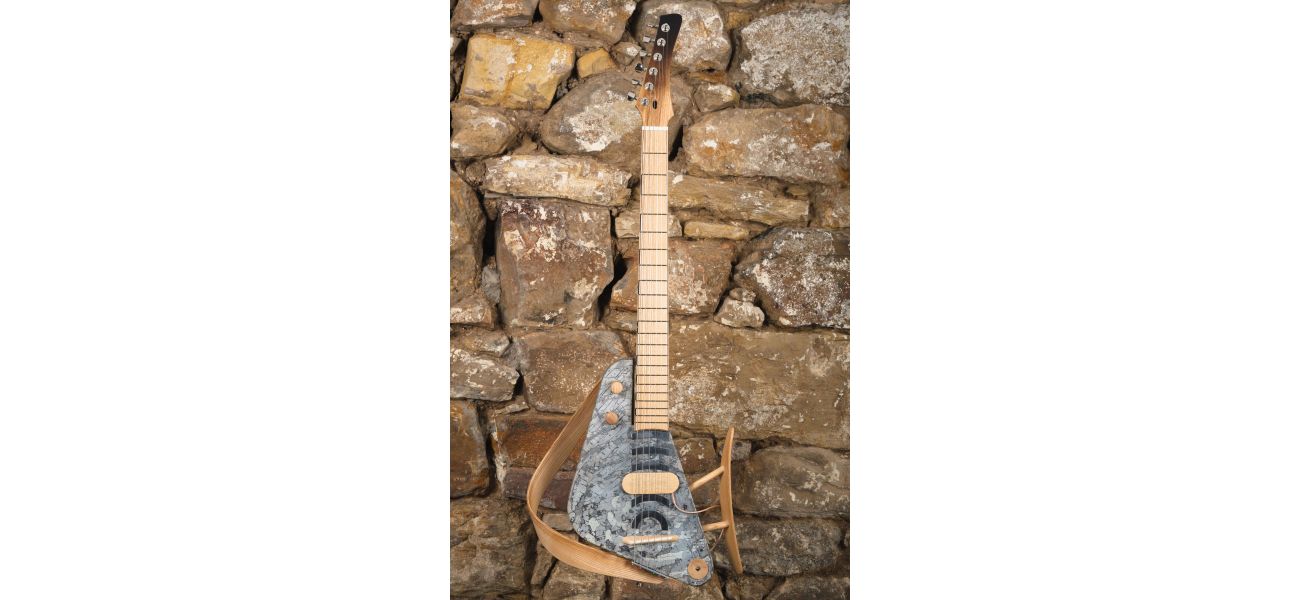Scottish artists are revitalizing ash trees in danger from a deadly fungus, bringing them back to life through their work.
Scottish ash trees in danger from deadly fungus, inspiring artists to save them through their work. A Stirlingshire farm's felled trees symbolize the massive loss.
September 2nd 2024.

The ash trees of Scotland are facing a serious threat. A deadly fungal disease has spread throughout the country, putting millions of trees at risk of being lost. It's a devastating situation, and it's hard not to feel the weight of this loss on a grand scale. The felling of four infected trees on a farm in Stirlingshire three years ago was a symbolic representation of the devastating impact of this disease.
However, amidst this tragedy, a group of artists has stepped forward with a plan to breathe new life into Scotland's ash trees. They have come together with the goal of transforming the native hardwood into beautiful pieces of art and furniture. It all started with an invitation from the Scottish Furniture Makers Association for makers, artists, and designers to submit their ideas for working with ash wood. From there, a group of 20 talented individuals was chosen to showcase their creations in an exhibition called Ash Rise, which aims to raise awareness about the impact of ash dieback in Scotland.
The exhibition features a diverse array of designs, including chairs, cabinets, tables, wall pieces, a kayak, textiles, paper art, and even a guitar made from ash and concrete. These pieces highlight the incredible potential of this precious resource and celebrate the skills and creativity of the furniture making and design community. According to Tom Addy, the project coordinator and a furniture maker himself, Ash Rise is the culmination of a three-year project that aims to showcase the value of Scottish ash and educate the public about its historical and cultural importance.
One of the most impressive aspects of ash wood is its versatility. When dried, it is lightweight, flexible, and incredibly strong, making it a popular choice for a wide range of objects. In the past, it was used to make everything from longbows and tools to sports equipment like tennis rackets and cricket bats. Nowadays, it continues to be used for the internal frame of the iconic Morgan sports car. Its distinctive grain also makes it a popular choice for furniture and decorative items like spoons, bowls, and caskets.
Unfortunately, many of Scotland's ash trees have been affected by ash dieback, a disease caused by the fungus Hymenoscyphus fraxineus. This disease causes the trees to lose their leaves, and sadly, hundreds of ash trees have already succumbed to it. In an effort to stop the spread of the disease, many trees have been felled. This is where Ash Rise comes in – it aims to not only highlight the environmental and economic impacts of ash dieback but also to showcase the sustainability of working with locally sourced native hardwoods.
The exhibition will tour three stunning venues in Edinburgh, Dumfries, and Inverness, and will also feature a short film commissioned to educate viewers about the process of turning a tree into a finished piece. According to artist and maker Naomi Mcintosh, who is part of the exhibition, it's a powerful and moving experience to be using timber from a single tree alongside other makers to create and demonstrate the importance of this material in art and design.
For Helena Robson, another artist involved in the exhibition, it has been a journey of reflection and awareness. She has been reminded of the role that ash wood has played in her life, from the tools she uses in her greenhouse to the hockey stick she had as a child. She's also excited to see the different processes that her fellow artists and makers will use to raise awareness about ash dieback and what can be done to combat it.
Ash Rise will open at the Royal Botanic Gardens in Edinburgh on September 13th, and it promises to be a thought-provoking and visually stunning display. It's a testament to the value of Scottish ash and the incredible talent and creativity of those involved in this project. If you're interested in learning more about the exhibition and other cultural stories, be sure to check out the latest issue of Scottish Field and subscribe for more.
However, amidst this tragedy, a group of artists has stepped forward with a plan to breathe new life into Scotland's ash trees. They have come together with the goal of transforming the native hardwood into beautiful pieces of art and furniture. It all started with an invitation from the Scottish Furniture Makers Association for makers, artists, and designers to submit their ideas for working with ash wood. From there, a group of 20 talented individuals was chosen to showcase their creations in an exhibition called Ash Rise, which aims to raise awareness about the impact of ash dieback in Scotland.
The exhibition features a diverse array of designs, including chairs, cabinets, tables, wall pieces, a kayak, textiles, paper art, and even a guitar made from ash and concrete. These pieces highlight the incredible potential of this precious resource and celebrate the skills and creativity of the furniture making and design community. According to Tom Addy, the project coordinator and a furniture maker himself, Ash Rise is the culmination of a three-year project that aims to showcase the value of Scottish ash and educate the public about its historical and cultural importance.
One of the most impressive aspects of ash wood is its versatility. When dried, it is lightweight, flexible, and incredibly strong, making it a popular choice for a wide range of objects. In the past, it was used to make everything from longbows and tools to sports equipment like tennis rackets and cricket bats. Nowadays, it continues to be used for the internal frame of the iconic Morgan sports car. Its distinctive grain also makes it a popular choice for furniture and decorative items like spoons, bowls, and caskets.
Unfortunately, many of Scotland's ash trees have been affected by ash dieback, a disease caused by the fungus Hymenoscyphus fraxineus. This disease causes the trees to lose their leaves, and sadly, hundreds of ash trees have already succumbed to it. In an effort to stop the spread of the disease, many trees have been felled. This is where Ash Rise comes in – it aims to not only highlight the environmental and economic impacts of ash dieback but also to showcase the sustainability of working with locally sourced native hardwoods.
The exhibition will tour three stunning venues in Edinburgh, Dumfries, and Inverness, and will also feature a short film commissioned to educate viewers about the process of turning a tree into a finished piece. According to artist and maker Naomi Mcintosh, who is part of the exhibition, it's a powerful and moving experience to be using timber from a single tree alongside other makers to create and demonstrate the importance of this material in art and design.
For Helena Robson, another artist involved in the exhibition, it has been a journey of reflection and awareness. She has been reminded of the role that ash wood has played in her life, from the tools she uses in her greenhouse to the hockey stick she had as a child. She's also excited to see the different processes that her fellow artists and makers will use to raise awareness about ash dieback and what can be done to combat it.
Ash Rise will open at the Royal Botanic Gardens in Edinburgh on September 13th, and it promises to be a thought-provoking and visually stunning display. It's a testament to the value of Scottish ash and the incredible talent and creativity of those involved in this project. If you're interested in learning more about the exhibition and other cultural stories, be sure to check out the latest issue of Scottish Field and subscribe for more.
[This article has been trending online recently and has been generated with AI. Your feed is customized.]
[Generative AI is experimental.]
0
0
Submit Comment





